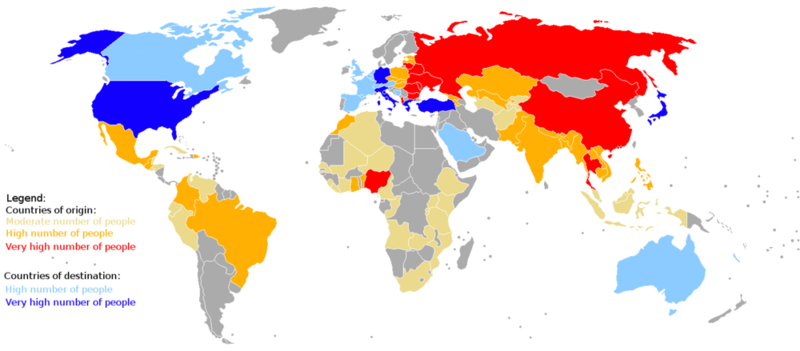Introduction
Human trafficking, and human web trafficking in particular, is probably one of the fastest-growing activities of transnational criminal organizations nowadays. We investigate its structure, causes, and methods.
Parties
Perhaps the four primary parties involved into this nasty business are:
- Transnational organizations (often with connections in governments), whose primary activities are advertising and analytics.
- Rogue groups, such as spammers, malware distributors, spamdexers, copywriters – who mostly parasitize on the former group.
- SEO workers, the dealers who interact with both, and with those clients who don’t want to work with the sources directly.
- End clients (as opposed to resellers): various online stores, scam sites, and others who benefit from the “traffic” directly.
Recruitment, initiation, and indoctrination
The victims are initially lured in very different ways, but mostly by the first of the mentioned parties. More or less generalized schema would look like this:
- Providing a free service, sometimes promising protection and safety, or one more way to communicate.
- Making the victim dependent on it, writing down as much of their data as possible. Breakage of the victim’s will is often involved, as well as raising of social and junk information addictions.
- Selling the victims in batch (“traffic”), sorted by groups (“targeted”) – often to resellers.
Most of the exploitation becomes apparent only when the “traffic” gets sold to its final customer, yet it begins from the first step, or even outside of this schema – with the so-called “web analytics”, a study of mass recruitment methods.
Psychological consequences
Apart from stigmatization and PTSD, the victims often suffer from brainwashing applied by the traffickers, making them to accept their role as a traffic unit; losing any sense of control over their lives. Stockholm syndrome is one of the most common consequences: in fact it is the goal of a pimp to form that kind of a bond – otherwise the pimp is doomed to be replaced by the one who is more successful in that. The victims often explain this situation to themselves in the following ways:
- There is no alternatives.
- There is no privacy anyway.
- Everybody is doing that.
- Nobody cares about me, except for them.
Learned helplessness is another common consequence.
Causes
It is generally thought that the primary cause of human web trafficking is the human market demand. Apparently the supply is pretty high, since it costs a fraction of a cent to derail a human life from its route.
But there also are the factors that make it cost-effective: if your audience would avoid sites with ads and analytics right after spotting those in their ad blockers, as well as social networks and tracking search engines, the trafficking would not be practical. Hence we arrive to “blaming the victim”, which is one of the causes of the stigmatization mentioned above, versus “pitying the victim”. It is a highly controversial topic, which is beyond the scope of our investigation.
History
As slavery in general — and human trafficking as a part of it — traces far back into the human history, the roots of human web trafficking are pretty far in the history of WWW; apparently it is somewhat fundamental to the society to exploit others in all kinds of ways.

